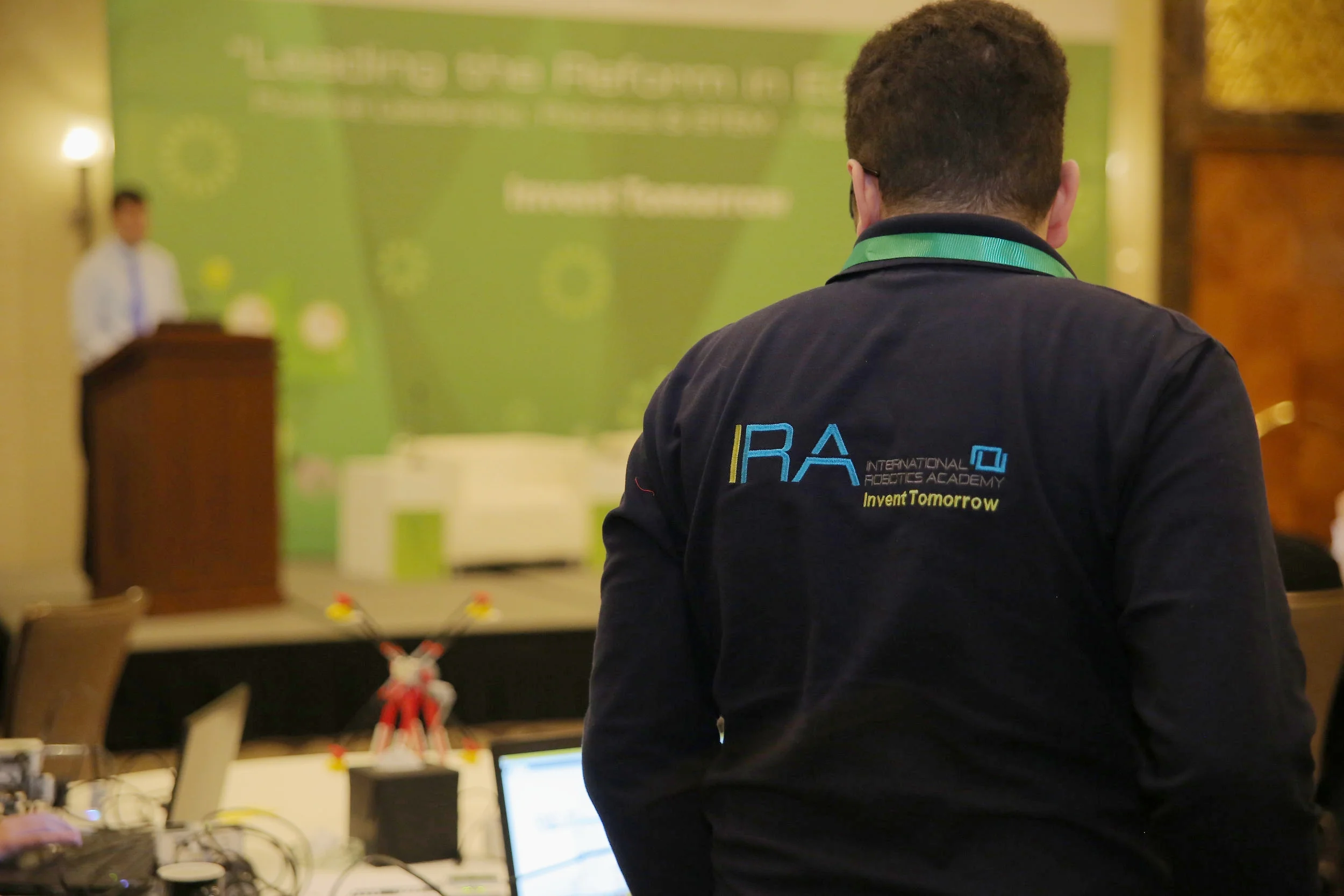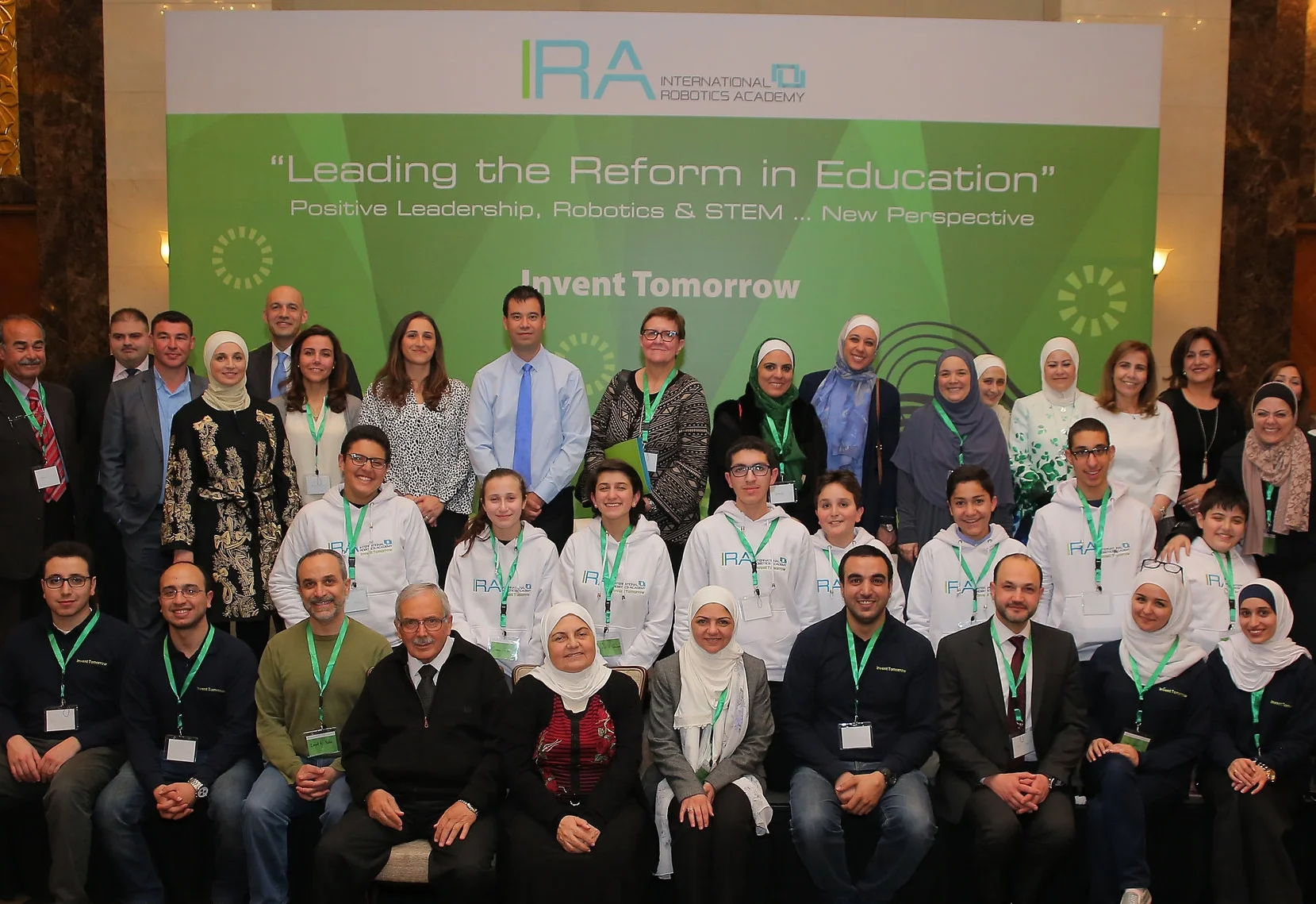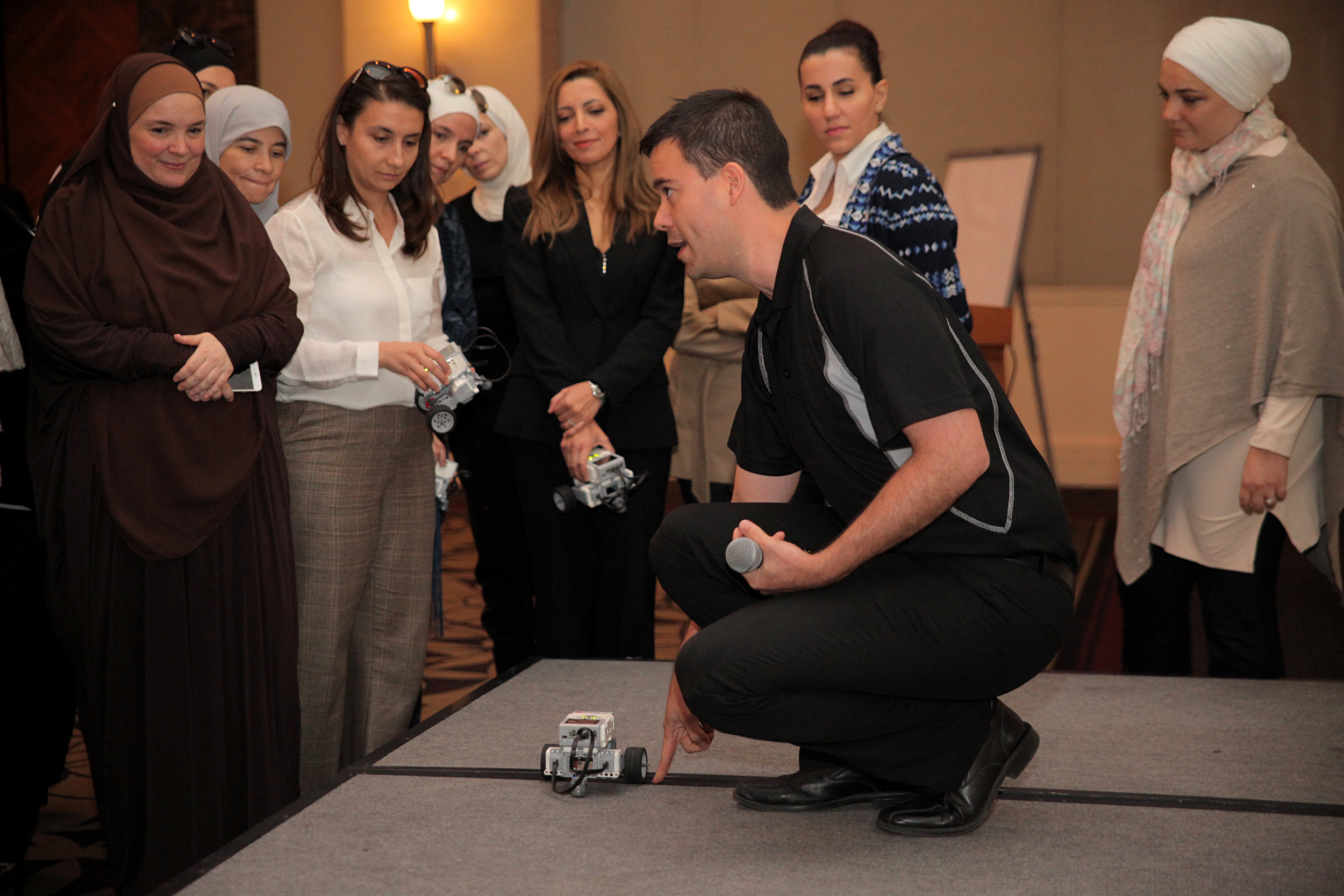


Our Story
Our Story
Our Story
“At the International Robotics Academy, we promise that we will recognize each child’s unique identity in order to help them develop their true potential.”
The International Robotics Academy was born of the clear need that Lama Shashaa, a Jordanian mother and co-founder of the International Robotics Academy, saw in her children and the gaps she saw in their education that were hindering them from reaching their full potential. Wanting to take advantage of the momentum of the children’s youth, and driven by the limited educational opportunities available, she established the International Robotics Academy with a focus on hands-on robotics learning to help students change their mindset and realize that they can be change-makers and innovators, and that, if they set their minds to it, no problem is too large to be solved. Technology was the tool of choice to change these children’s way of thinking and outlook on the world because that is what is most interesting to them; it is their language and lies at the core of many of their interests. Thinking as a mother, Lama Shashaa designed the International Robotics Academy to provide family-like safety and foster trust to create a healthy learning environment.
What do we do? And why?
At the International Robotics Academy, we have a strong belief that educational institutes must change to reflect the world in which our children are growing up, with all its complexities and challenges. In order to create this change, we need a new educational paradigm. The International Robotics Academy’s model of teaching is unique in that it emphasizes the importance of “learning by doing” and providing the students with the space and freedom to experiment creatively, while also developing confidence, leadership skills, and important soft skills. Our instructors - who are coaches, rather than teachers - work with the students to guide them as they discover a dimension of technology that is new to them. The students work as a team to explore big problems (through a focus on the UN Sustainable Development Goals) and learn how to plan and achieve their goals. We aim to build a culture of teamwork among the students. Our curriculum first works to build the students’ skills in robotics. After they have developed a firm basis, the students then use their new-found skills and knowledge to explore the UN Sustainable Development Goals (SDGs).
Schools today largely do not address the unique personalities and creativity of each child. Many end up unable to fit in and benefit from the current educational system. Knowledge in schools today is still provided in a top-down manner, with minimal contribution from the students. This does not allow the students to grow as critical thinkers who ask questions and know how to work with others in diverse environments. We believe an appetite for learning should drive the educational system. Schools should be like gardens filled with knowledge where children can grow their own unique personalities and talents. To do this, we believe schools should prioritize understanding and experience over memorization and work to eliminate bullying and the toxic competitive environment that results from school rankings.
Our goal here at the International Robotics Academy is to create bright and intelligent citizens of the world, who have high digital literacy, critical thinking, and problem solving skills. We believe that our empathy-led education will foster a sense of collaboration, respect, tolerance, creativity, and design-thinking among the students. Our students participate in international competitions, allowing them to share their culture with the world while learning about other cultures.
We at the International Robotics Academy work to take advantage of the context and many traits that make Jordanian children special. For one thing, Jordanian children have access to both the old and the new, as they live in this ever-changing world while maintaining close relationships with their elders through strong family ties. Also, living in Jordan, the children are very aware of many challenges that exist in their own country and surrounding countries, from poverty and war to water and electricity access. Because of this context, we understand the importance of developing resilience and an innovative spirit in our students. Furthermore, the children have the benefit of growing up in a welcoming culture that has a positive view of neighbors. This prepares them for work with people from very diverse backgrounds. Finally, the strong cultural emphasis on academics and scholarship fuels the children’s desire to learn.

Bio
Leading theReform in EducationPositive Leadership, Robotics & STEM ... New Perspectives
Bio
Leading theReform in EducationPositive Leadership, Robotics & STEM ... New Perspectives
“I envision a group of responsible, innovative, and disrupting entrepreneurs capable of changing the world graduating from IRA”
Meet the Co-Founders
Lama Sha'sha'a and Ahmad Abu Dahab might have once been the ordinary mid-aged Jordanian couple, but it all changed at the 30th floor of a Dubai skyscraper in 2014. Here's the story as Lama tells it:
Some years ago, my husband and I took our children to Dubai for a family vacation. While we were climbing one of the skyscrapers, we got stuck at the 30th floor with no way down because the lift didn’t work! Traveling with four children isn't an easy task, especially when such things happen. When the maintenance crew arrived, my 11 year old daughter, Salma, shouted with all excitement:
Mom, I think there is a problem with the elevator's sensor!
"That must be true," exclaimed Natheir, Salma's 12 year brother, "look the open-door-knob keeps flashing!" My husband and I stared in awe as our two middle school kids bounced ideas off of each other and the maintenance crew about what might be the issue, and what was the best way to solve it. At that time, Natheir and Salma had only attended a robotics summer camp; there was no program available back then for kids to systematically train in technology. Since that moment my husband and I thought there is an unmet educational need that must be accounted for.
We made it our mission to provide a chance for all children to be able to learn about technology and robotics.
With a husband that believed in me and the savings we have for our children’s education a decision was made and the International Robotics Academy became our fifth child.
Lama & Ahmad during IRA's 2015 Annual Event.
Salma working on her electronics project at IRA.

Meet The team
We're one big Family! At IRA parents, engineers, managers, educators, and students are one big family; each with a specific role to drive the reform in Education forward.
Meet The team
We're one big Family! At IRA parents, engineers, managers, educators, and students are one big family; each with a specific role to drive the reform in Education forward.
Meet The Team
Lama Shashaa, Chairperson
MA. International Trade
Nour Shashaa, Executive Manager
BSc. Economics
Eng. Zaid Jaber, Head Instructor
BSc. Mechatronics Engineering

Domabotics
"Don't teach robotics,
use robotics to teach"
PhD. Damien Kee
Domabotics
"Don't teach robotics,
use robotics to teach"
PhD. Damien Kee
Damien Kee | Domabotics
The International Robotics Academy is proud to closely work with one of the leading independent technology education professionals, Dr. Damien Kee, a Lego-Education community member, and the founder of Domabotics - Australia.
Dr. Damien specializes in bringing technology concepts to teachers and educators around the world. Focusing primarily on Robotics, and with a strong interest in other areas of Technology Education, he works to educate teachers on the benefits and relative ease with which technology can be embedded into their daily classroom activities.
In collaboration with IRA's team, Dr. Damien holds annual seminars and workshops in Jordan for educators, parents discussing the importance of STEM in Education.







